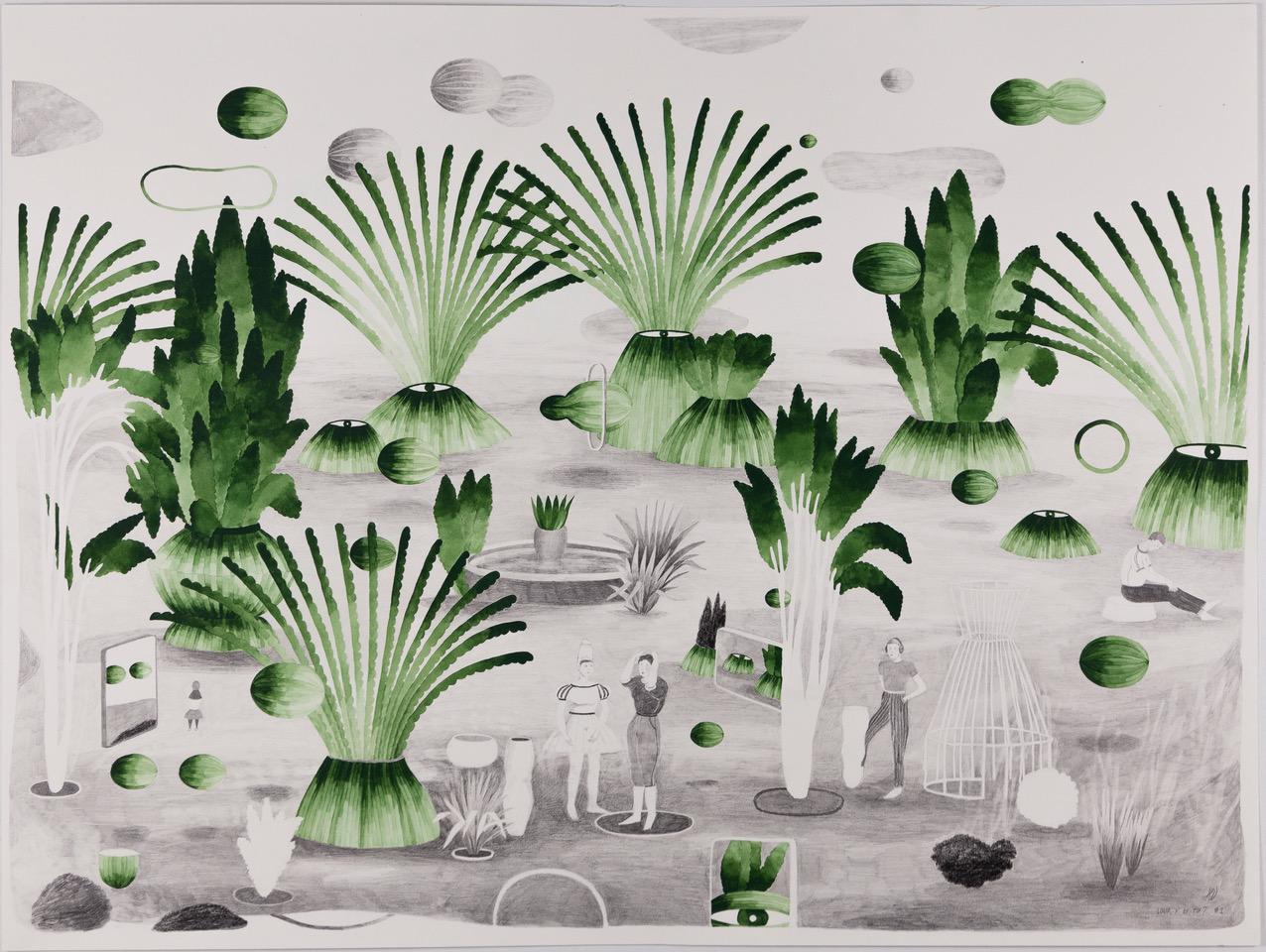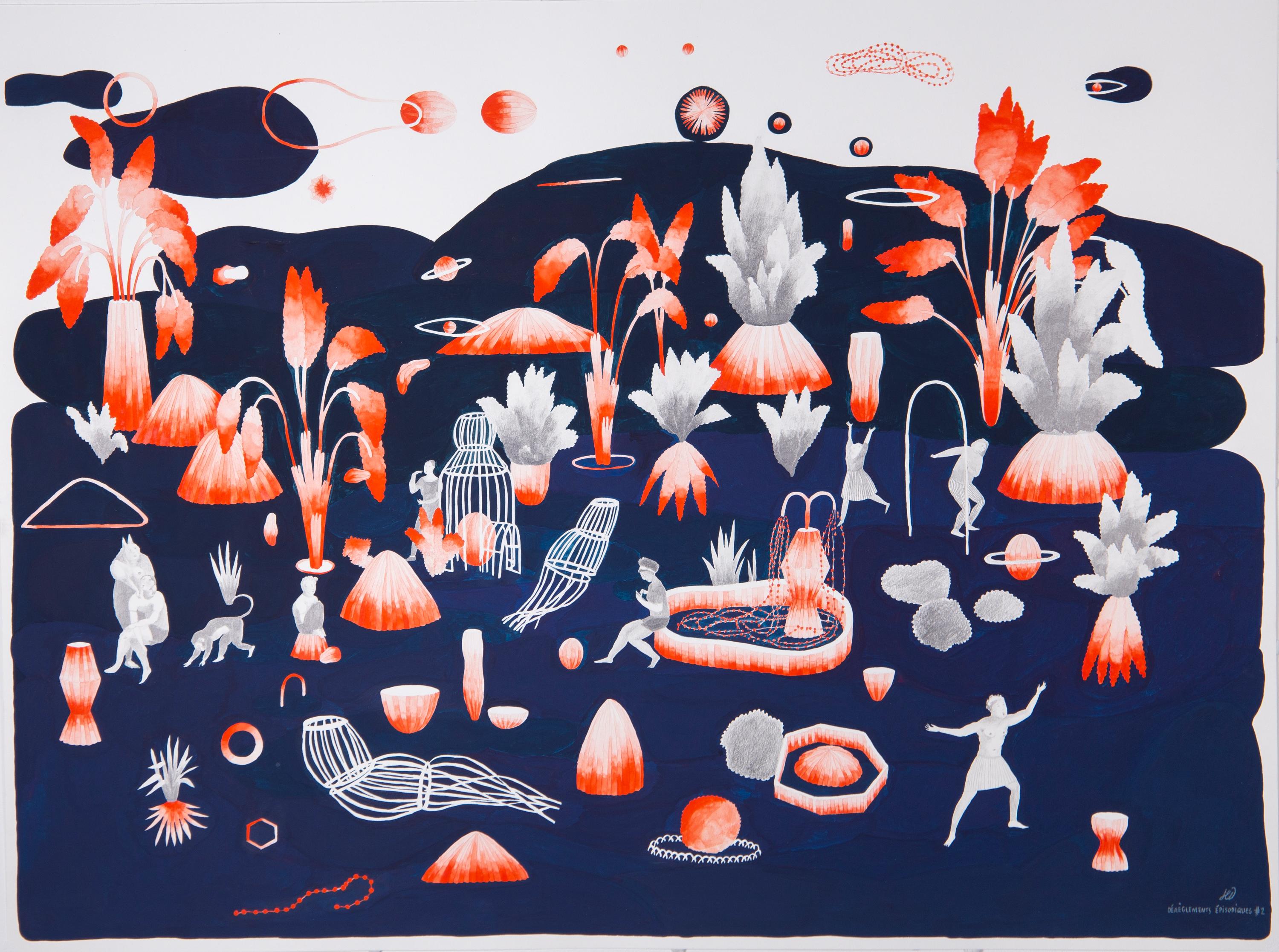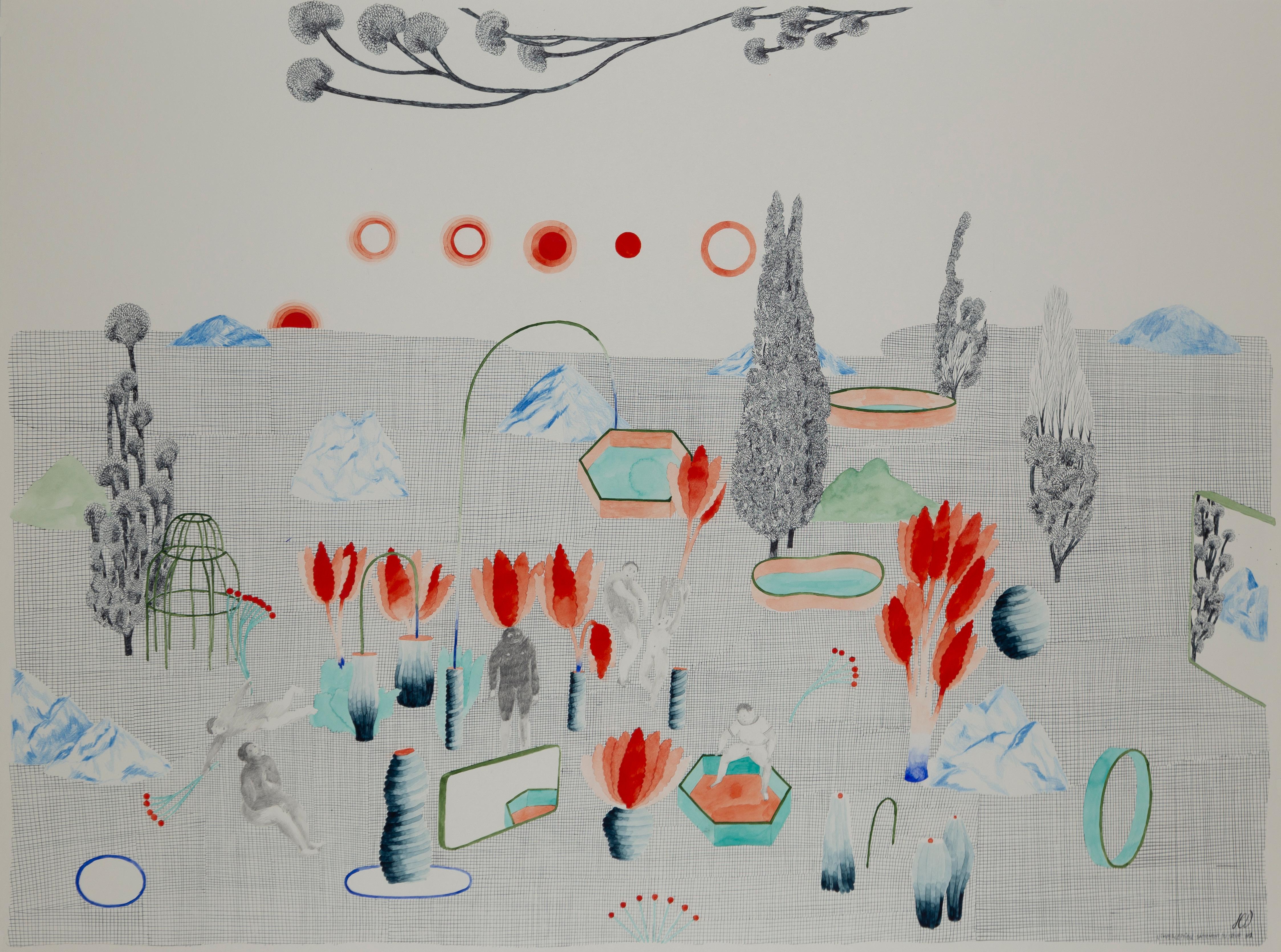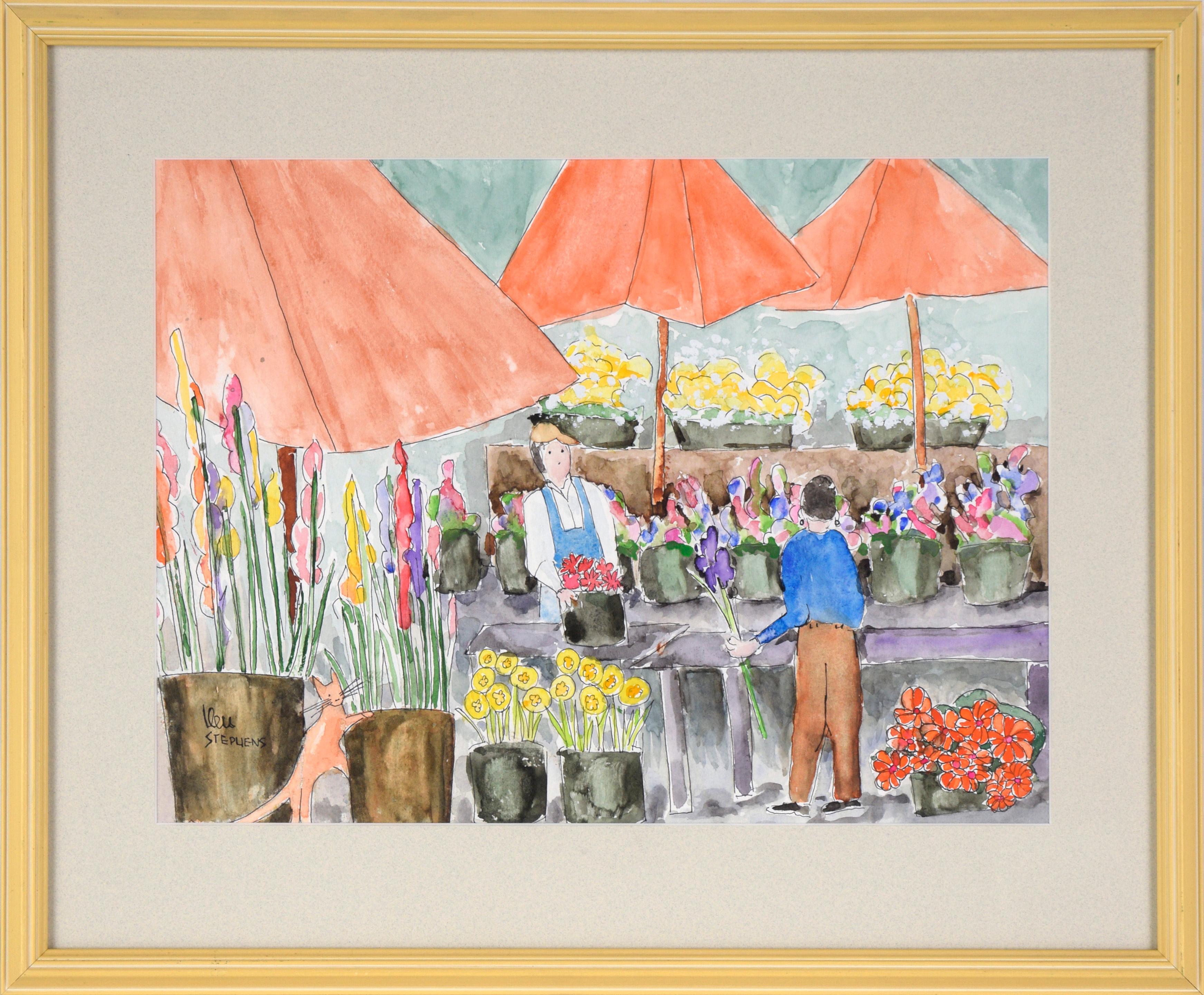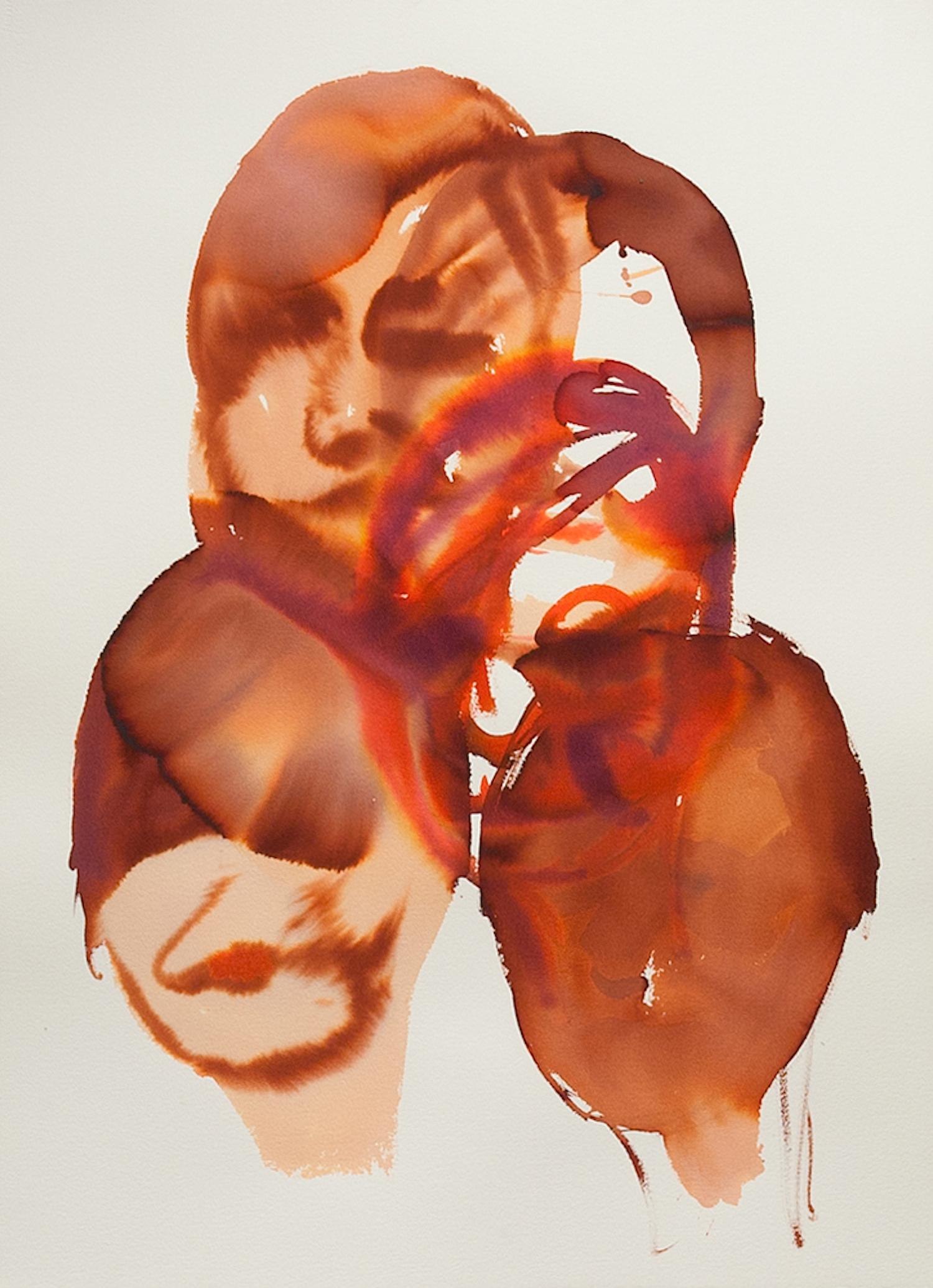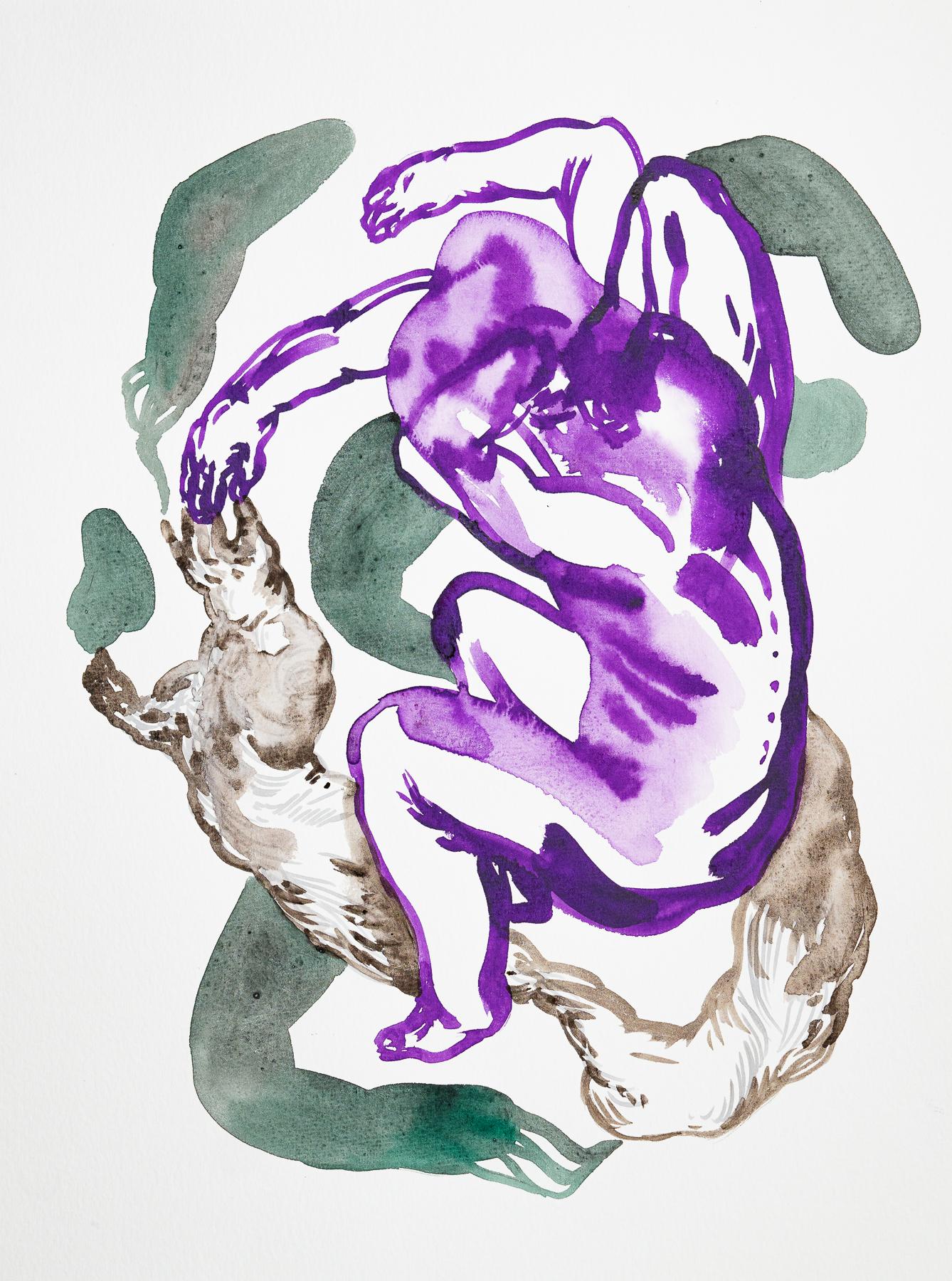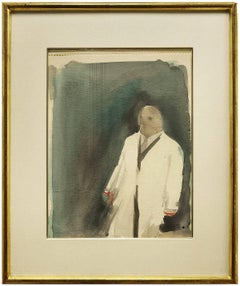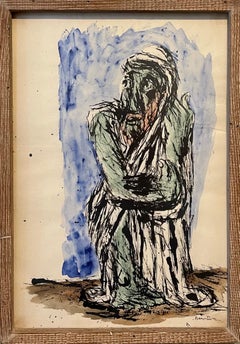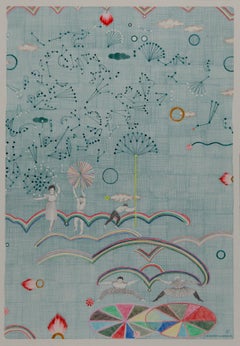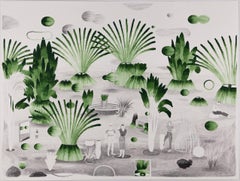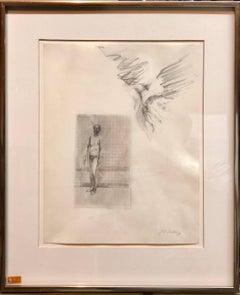
Abstract Modernist Drawing of a Nude Man with Winged Figure, Angel
View Similar Items
John DobbsAbstract Modernist Drawing of a Nude Man with Winged Figure, Angel1978
1978
About the Item
- Creator:John Dobbs (1931 - 1911, American)
- Creation Year:1978
- Dimensions:Height: 10.25 in (26.04 cm)Width: 9.5 in (24.13 cm)
- Medium:
- Movement & Style:
- Period:
- Condition:minor waving to paper. minor wear.
- Gallery Location:Surfside, FL
- Reference Number:1stDibs: LU3823007081
John Dobbs
John Dobbs had many solo shows at galleries, universities and museums. His work was exhibited at the Museum of Modern Art, Whitney Museum of American Art, American Academy of Arts and Letters, Butler Institute of American Art in Ohio, and Salon Populiste in Paris. Dobbs’ paintings are part of the permanent collections of the Hirshhorn Museum, Washington, DC; the Montclair Art Museum, Montclair, New Jersey; the Neuberger Museum of Art, Purchase, New York; the Canton Museum of Art, Canton, Ohio and the Springfield Museum of Art, Springfield, Massachusetts. From 1972–96, Dobbs was a professor of art at John Jay College of Criminal Justice of the City University of New York. He was a member of the National Academy of Design, to which he was elected in 1976.
More From This Seller
View All20th Century Contemporary Figurative Drawings and Watercolors
Watercolor
20th Century Contemporary Figurative Drawings and Watercolors
Paper, Watercolor
1910s Expressionist Figurative Drawings and Watercolors
Paper, Ink, Watercolor
Mid-20th Century Expressionist Abstract Drawings and Watercolors
Paper, Watercolor
Early 20th Century Expressionist Figurative Drawings and Watercolors
Paper, Watercolor, Etching
Early 20th Century Expressionist Figurative Drawings and Watercolors
Paper, Watercolor, Etching
You May Also Like
2010s Contemporary Landscape Drawings and Watercolors
Paper, Gouache, Color Pencil
2010s Contemporary Figurative Drawings and Watercolors
Paper, Gouache, Color Pencil
2010s Contemporary Landscape Drawings and Watercolors
Paper, Gouache, Pencil
2010s Contemporary Figurative Drawings and Watercolors
Paper, Gouache, Graphite
2010s Contemporary Figurative Drawings and Watercolors
Paper, Gouache, Graphite
1990s Contemporary Abstract Drawings and Watercolors
Ink, Mixed Media, Watercolor, Gouache, Pen
